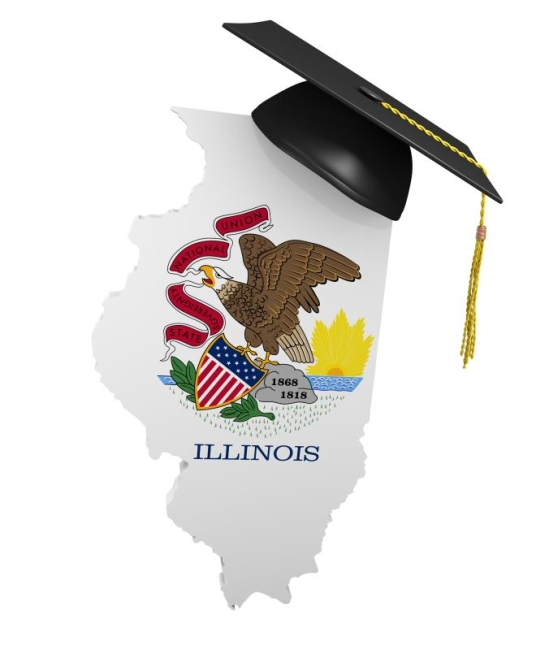You have /5 articles left.
Sign up for a free account or log in.

ISTOCK.COM/Kagenmi
Illinois State University has conducted more than 6,000 COVID-19 tests and reported more than 1,300 positive tests among students since the start of the semester. Southern Illinois University has reported fewer than 50 cases, but university officials acknowledge the data provided by county health officials are incomplete and say they will be building up their own testing capacity later this month. Meanwhile Northern Illinois University, which has reported 77 positive tests since Aug. 17, began surveillance testing of asymptomatic students chosen at random last Wednesday.
Comparisons across colleges, even within a single state, are complicated because colleges differ greatly in their testing capacity and reporting practices. But the experiences of several public universities in Illinois -- which ranks fourth nationally among states for number of new COVID cases over the last seven days -- provides a glimpse into the various ways they're trying, and succeeding or failing, to keep their campuses safe.
Illinois State has reported 1,314 positive tests among students since Aug. 17, a positive test rate of 16.9 percent. The state of Illinois sets an 8 percent positivity rate as one threshold for determining if additional mitigation steps to control spread are needed.
Brian Rejack, an associate professor of English, would like to see the university take steps to bring its caseload down by, for example, asking on- and off-campus students to stay in their residences or canceling in-person classes for at least two weeks.
"In the abstract I would say what needs to happen is a more significant response," Rejack said. "Part of my concern with what’s happened thus far is that the situation at ISU is really bad -- our numbers are very, very bad -- and we’re really at this point not acting like it."
The metro area in which Illinois State sits, Bloomington, Ill., ranks seventh nationally in terms of number of new cases per capita over the past two weeks. Still, it's hard to definitively say whether Illinois State is doing worse than institutions with less testing. Illinois State has tested 6,534 students on campus -- more, the university says, than any university in the state except the University of Illinois at Urbana-Champaign.
"We have tried very hard to be very transparent not only to our students, faculty and staff but also to the local community and within the state," said Larry Dietz, Illinois State's president. "We're doing symptomatic testing through our Student Health Services. We’re also doing surveillance testing at a couple of sites on the campus. And we started classes earlier than a lot of other institutions. We started on the 17th of August."
Dietz believes the university is still seeing the consequences of some big off-campus gatherings that happened when students first returned to the campus. The surrounding town of Normal has issued two new emergency ordinances limiting the size of gatherings in and around Illinois State to 10 people or fewer and requiring bars and restaurants to serve only customers who are seated.
More than 80 percent of the Illinois State's classes are being offered online. The university has fewer than 4,000 students in its residence halls, about 2,300 fewer than last fall.
The university is moving toward adopting a rapid saliva-based test developed by researchers at UIUC, but administrators say it will take at least 10 weeks to build a laboratory for processing the tests. In the meantime, the university has contracted with a vendor to conduct free on-campus testing for students. Dietz said the university’s board authorized $3 million in expenditures for testing this fall, and that each test costs the university $110.
“We’ve tried to be responsible on this. I think all the other institutions have as well,” Dietz said. “It’s just that we all are operating a little differently.”
Other public universities in the state are in the process of expanding their testing capacity. Northern Illinois has announced plans to test about 600 randomly selected students per week, but university officials declined interview requests to provide more information.
Northern Illinois also required students living on campus to submit a negative COVID test result within seven days of moving in. The university reports on its COVID dashboard that a total of 2,037 students were tested before coming to campus and 39 tested positive, a 1.9 percent positivity rate. The current positivity rate in Northern Illinois's surrounding county, DeKalb, is 4.9 percent.
Southern Illinois University at Carbondale, which has reported just 40 positive tests among students and employees since Aug. 20 -- and which is located in a county with a 5.5 percent test positivity rate -- has been criticized by students and faculty for its testing and reporting protocols. The editorial board of the student newspaper, the Daily Egyptian, published a scathing editorial Aug. 26 saying the university’s lack of COVID-19 planning, communication and transparency could kill students.
“One of the concerns that we have, that other students have and that faculty and staff on our campus have is that SIU is not really being transparent about our outbreaks or case counts,” said Kallie Cox, the Daily Egyptian’s editor in chief. “At first, they weren’t going to release any numbers regarding cases at SIU, but after some public backlash they decided to. However, the numbers that they’re releasing now are not all-encompassing. Also, we don’t have a testing plan in place on campus so we don’t know how many people have the virus.”
Cox noted, for example, that Southern Illinois did not require testing of students upon their return to campus. "So we have no idea how many cases we have, and that can be dangerous," she said.
Ben Newman, the university police chief and manager of the emergency operations center, said Southern Illinois relied on guidance for colleges from the Centers for Disease Control and Prevention, which did not recommend testing all returning students, faculty and staff.
“The CDC said it was not recommended as being effective, and quite frankly we did not have resources for centralized testing,” Newman said. “Our testing plan is decentralized, if you will. We are testing symptomatic students at our student health center and directing other students and our faculty and staff to Southern Illinois Healthcare,” a local health-care and hospital system, “or their local health-care providers.”
Newman said the decentralized nature of testing has made reporting a challenge: the university is only reporting case numbers confirmed by the local Jackson County health department. That means that cases of students or employees who live outside the county borders, or cases of students or employees who do not self-disclose their SIU affiliation to Jackson County health officials, are not reported by the university.
"We acknowledge that our numbers are incomplete -- we are very transparent about this," Newman said. "We report out numbers we get from Jackson County. We are a regional institution. Students come to us from all over. We are reporting out the numbers that we receive."
However, Southern Illinois plans to step up its testing program soon. Newman said that the university "worked in partnership with Southern Illinois Healthcare and the Jackson County Health Department and received a grant to bring testing to campus for all faculty, staff and students regardless of symptoms in mid-September."
Rae Goldsmith, a university spokeswoman, said the $2.86 million grant from the Illinois Department of Public Health will, among other things, enable Southern Illinois Healthcare to bring COVID testing to the SIU campus and provide new resources for contact tracing, equipment and staff.
"Testing has been on our mind from the very beginning; it’s making it possible that’s been the challenge," Goldsmith said. "We know that we’ll have a different-looking picture when we get the testing on campus."
A report on reopening campuses from the Illinois Board of Higher Education published this summer suggests that the state's colleges should work with the state and local health departments "if they determine that surveillance testing becomes necessary in a specific area or region."
Three professors who sat on the IBHE's reopening committee asked that their names be removed from the committee's report because they said it lacked specific technical information and guidance, the public radio station WBEZ reported. (The IBHE's executive director told WBEZ that the objective of the report was to provide general guidance in line with recommendations of the CDC and state health departments while allowing each institution to tap its own experts to develop customized plans.) The professors released their own report with technical advice that among other things recommended "ongoing systematic surveillance testing."
One of the authors of that report, William J. Mills III, an associate professor of engineering technology at Northern Illinois, said the difficulty of comparing institutions is "reflective of the fact that there is no central guidance. I would have liked to have seen this."
Instead, testing and reporting standards vary from one institution to another.
"It would be nice if there was a system that applied to everyone and that everyone reported the same stats. Then you’d be able to compare," said Gerri Taylor, the co-chair of the American College Health Association's COVID-19 task force. "But in this situation I think it’s difficult."
While some colleges are just starting to launch surveillance testing programs, Illinois's flagship public campus, UIUC, is testing all students and employees twice weekly and has as detailed a picture of case numbers as virtually any university out there. It is using a test designed by its own faculty that has been approved by the Food and Drug Administration to be used on an emergency basis.
To date the university has conducted more than 200,000 tests and reports a test positivity rate of 1.43 percent. UIUC’s chancellor, Robert J. Jones, analogized the testing strategy to "a canary in the mine, if you will, to let us know when things are headed in the wrong direction."
UIUC recently reported that the trends were going the wrong way.
"In the past few days, the number of positive cases has increased at a rate that is on track to double the number of cases every week. If that trend continues, the university would experience 75-100 new cases each day and would expect to have as many as 8,000 positive cases over the course of the semester," the university said in a news release last week.
“We attribute the problem to a number of students participating in large parties and other gatherings this past weekend, as well as individuals who chose to ignore Champaign-Urbana Public Health District guidance to isolate when they test positive and to quarantine after they’ve been in contact with someone who has tested positive,” Jones said. Administrators said, for example, they have evidence of students who were supposed to be in isolation housing swiping their identification cards at locations they were not approved to visit.
UIUC said it will be pursuing disciplinary action against offending students. In addition, the university asked all students to only leave their residences for classes or other essential purposes for two weeks.
"From now through Wednesday, Sept. 16, we expect undergraduate students to avoid gathering in small or large groups under any circumstances,” Jones said. “They should only leave their residence for essential activities, including taking twice-weekly COVID-19 tests, attending class, purchasing groceries or food, going to work, engaging in individual outdoor activities, attending religious services, or seeking medical attention.”
The UIUC example points to the challenges of containing spread even with ample testing.
Sam Pavel, an associate professor of aviation management at Southern Illinois Carbondale and vice president of the campus's Faculty Association, noted that his alma mater in neighboring Indiana, the University of Notre Dame, tested students broadly and still had an outbreak. Notre Dame temporarily shifted to remote learning for two weeks on Aug. 18 in response to rising case numbers; in-person classes resumed last week.
"This is nerve-racking, especially with the universities that don’t have the resources, because this will get out of hand before we know it’s even there," Pavel said.








